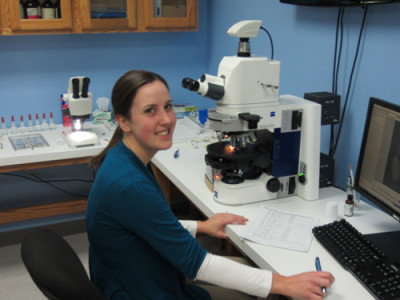Reflected Light Microscopy
Reflected light microscopy is used to study opaque substances, which can include geological specimens (polished sections), building materials (concrete), metals (metallography) or opaque particles. The light source is located above the specimen and is focused onto the surface of a sample (e.g. a metallic particle such as lead from a bullet). The degree to which light is reflected off of the material is dependent upon a samples reflectivity and, in some cases, orientation. With this surface imaging technique, luster, color, striations, cracks, toolmarks, and features can be visualized to give clues about an unknown particle’s identity or origin. Specialized applicaitons of reflected light are used with interferometry to study nanometer scale surface fluctuations, with polarized light to identify minerals and phases, and with ultraviolet light to study fluorescence.
How May We Help You?
Contact usto discuss your project in more detail.








